There is a muscle in your body, often ignored by modern medicine, that could be the key to overcoming persistent pain, stubborn belly fat, and chronic fatigue. Known as the Psoas Major, this deep-seated core muscle is frequently referred to as the “hidden survival muscle” because of its critical role in maintaining physical and emotional well-being.

When the psoas is imbalanced, tight, or weak, it can have a cascading impact on your overall health and quality of life, leading to issues such as:
- Chronic Pain: A tight psoas contributes to lower back pain, hip discomfort, and posture problems.
- Stubborn Belly Fat: An imbalanced psoas can impair metabolic function, making it difficult to shed fat around your midsection.
- Fatigue and Low Energy: A misaligned psoas drains your energy by forcing your body to work harder for even basic movements.
What Makes the Psoas So Important?
The psoas is the only muscle in your body that connects your upper body to your lower body, running from your lumbar spine to your femur. It plays a vital role in core stability, movement, and even emotional regulation.
Core Stability: The psoas supports spinal alignment, helping you maintain good posture and avoid injuries.Movement: Every step you take relies on a functional psoas for balance and strength.Emotional Health: The psoas is connected to your “fight-or-flight” response, meaning its tension can exacerbate stress and anxiety.
Signs Your Psoas Is Imbalanced
Do you struggle with any of these issues?
- Lower Back or Hip Pain
- Difficulty Losing Belly Fat
- Stiffness After Sitting for Long Periods
- Digestive Issues
- Chronic Fatigue or Poor Sleep
If so, your psoas might be the hidden culprit.

How to Restore Your Psoas
To unlock the full potential of your psoas muscle and regain your vitality:
Stretch and Release: Incorporate targeted stretches like the lunge stretch or hip-opening exercises to release tension.
Strengthen the Core: Engage in exercises that activate the psoas while improving overall core stability.
Improve Posture: Practice mindful sitting and standing habits to reduce undue stress on the psoas.
Breathwork: Diaphragmatic breathing can help relax the psoas and alleviate stress.
Unlock Your Body’s Hidden Energy
Don’t let this overlooked muscle keep you stuck in pain, fatigue, or frustration. By addressing your psoas health, you can unlock greater mobility, shed stubborn fat, and feel re-energized every day. Take control of your wellness by focusing on the muscle that modern medicine often misses—the psoas major!
Ready to take the first step? Learn how to release your psoas and reclaim your vitality today.

Click here and learn about the validated method that will help you
The shocking ways that tight hips are holding you back… that you won’t believe
Here’s the truth: Most people don’t realize the cause of their problems is tight hip flexors.
The impact the hips had on the whole body never occurred to me until I saw the effect of tight hip flexors had on the health and well-being of my wife after she gave birth.
It was only then that I truly understood the magnitude of the problem.
We’re not just talking about a bit of soreness; tight hip flexors are the root cause of problems such as:
- Nagging joint pains in your legs, lower back or hips
- Walking with discomfort
- Hips locking up
- Bad posture
- Trouble sleeping
- Sluggishness in day to day life
- High Anxiety
- Digestive problems
- Compromised Immune System
- Circulatory issues
- Loss of sexual performance
- Lack of Explosiveness in the gym or sports
If any of these sound familiar to you, don’t worry because you’re not alone.
Tight hip flexors affect nearly everybody, but few realize the impact on your whole body.
Again, everything flows through the hips.
Think of the hips as a barometer. The health and flexibility of your hip muscles are an indicator of the strength and health of our whole body.
And at the very heart of this is the “hidden” most powerful survival Muscle. When this muscle is healthy, we are healthy.
troducing The Body’s Most Powerful,
Primal Muscle… … That You’ve Never Heard Of

Your hips are the bridge between your upper body and lower body. They are at the center of your body’s movement.
Sitting within the well of your hip and lower spine is the psoas major muscle, one of the two muscles that makes up the iliopsoas.
It’s often called the “mighty” psoas (pronounced so-az) for the many important functions it plays in the movement of your body.
The psoas is the only muscle in the human body connecting the upper body to the lower body.
The muscle attaches to the vertebrae of the lower spine, moves through the pelvis and connects to a tendon at the top of the femur. It also attaches to the diaphragm, so it’s connected to your breathing, and upon it sits all the major organs.
A functioning psoas muscle creates a neutral pelvic alignment, stabilizes the hips, supports the lower spine and abdomen, supports the organs in the pelvic and abdominal cavity and gives you greater mobility and core strength.
When it functions well, it has the power to…
- … help you achieve peak performance day after day after day.
- … rapidly drop ugly body fat that stubbornly clings to your body.
- … train harder, heavier and gain strength faster than you thought possible.
- … hit your peak of sexual health.
- … flood your mind and body with renewed energy and vigor.
Put simply, this muscle is the core of activity in your body. So, when it’s out of balance or if the psoas tightens, there are serious consequences which flow throughout the body.
And there’s one activity, in particular, that’s the sworn enemy of your psoas muscle…
The No.1 activity that’s making you weaker, fatter and is KILLING your sex life
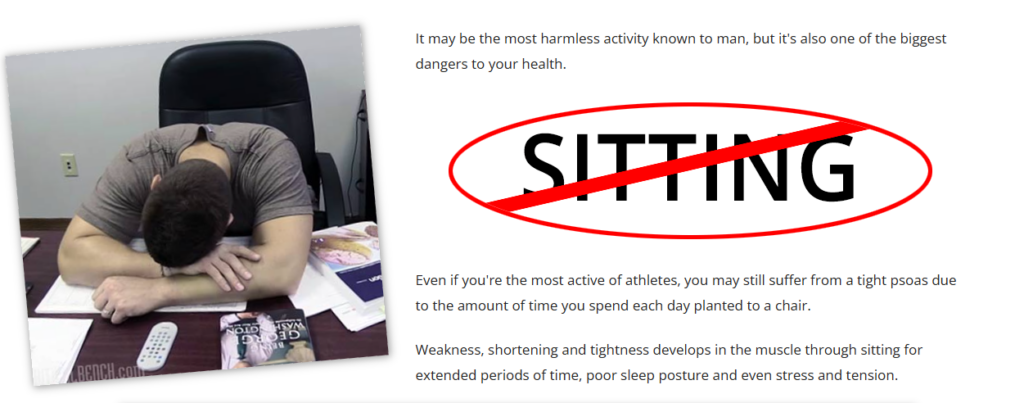


Sitting is your enemy in the quest to discover peak health,
because of the wide-ranging impact it causes to your most vital muscle.
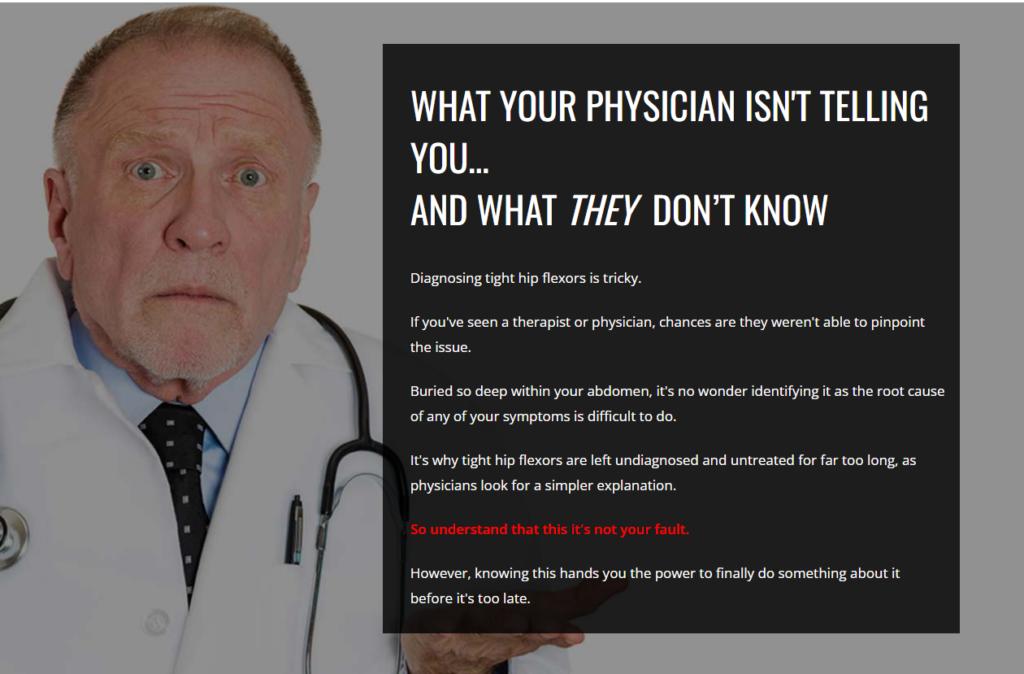
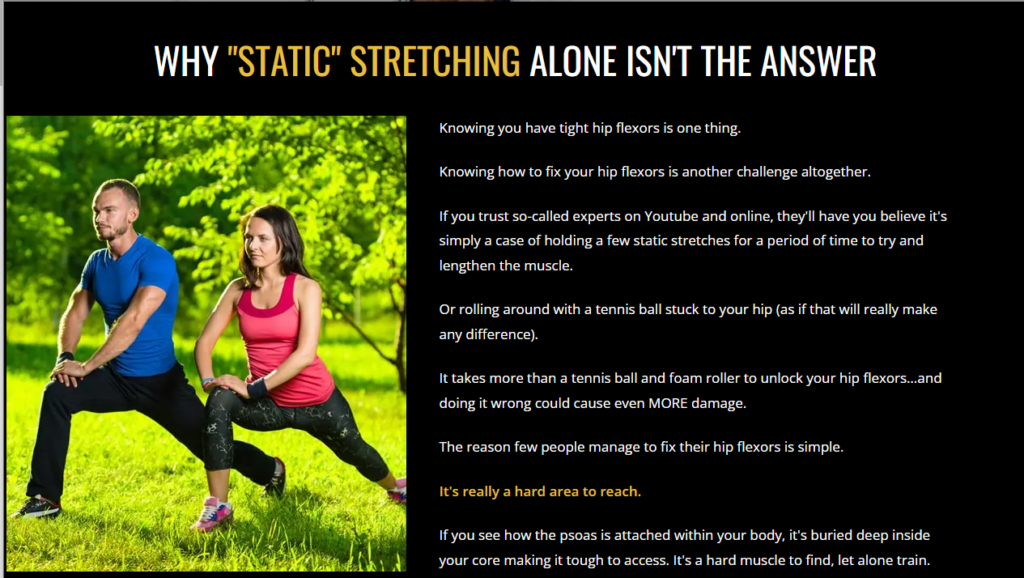

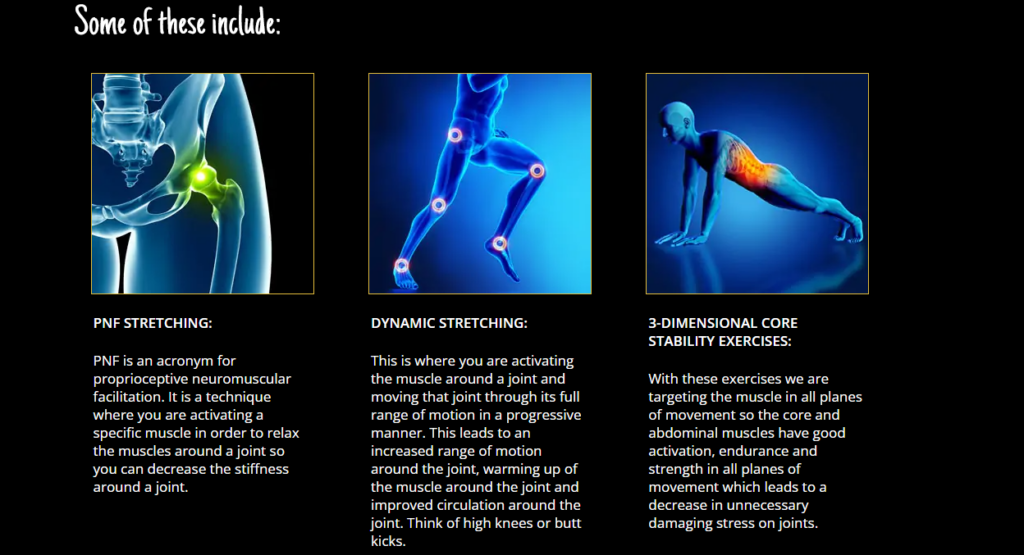
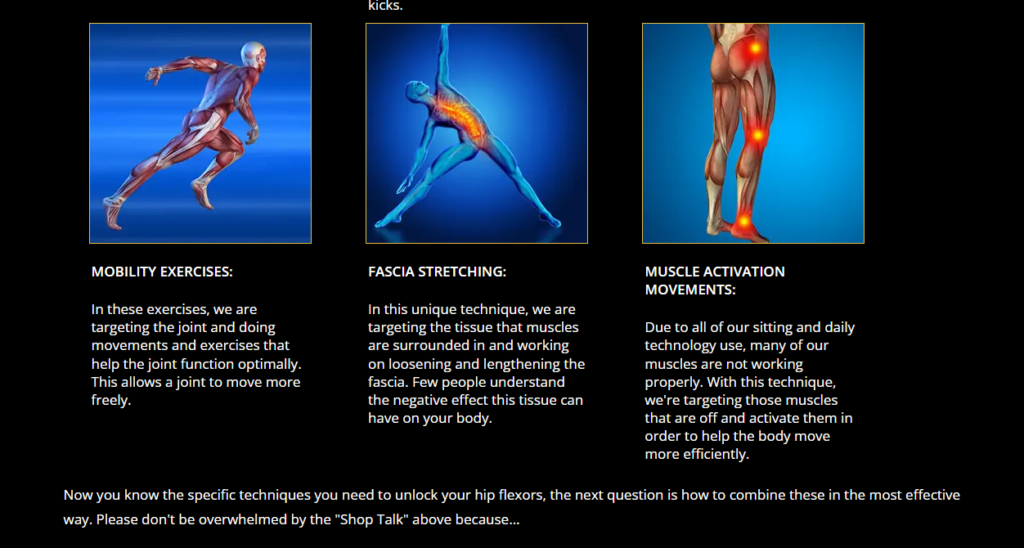
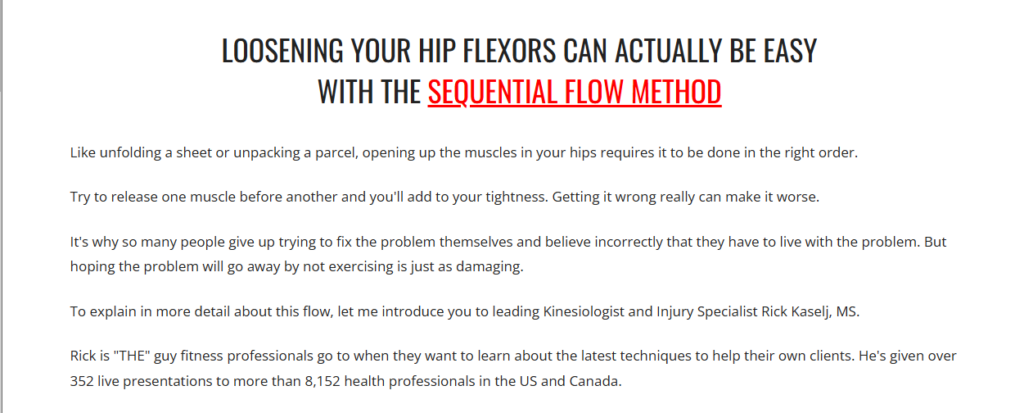
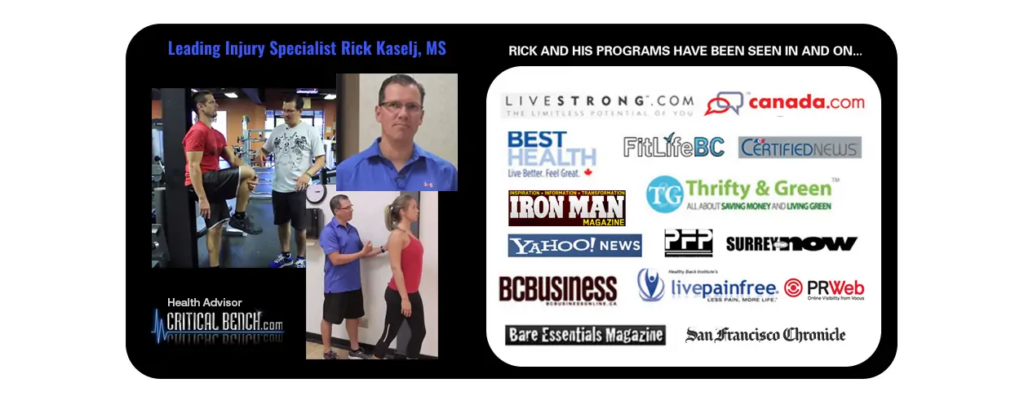
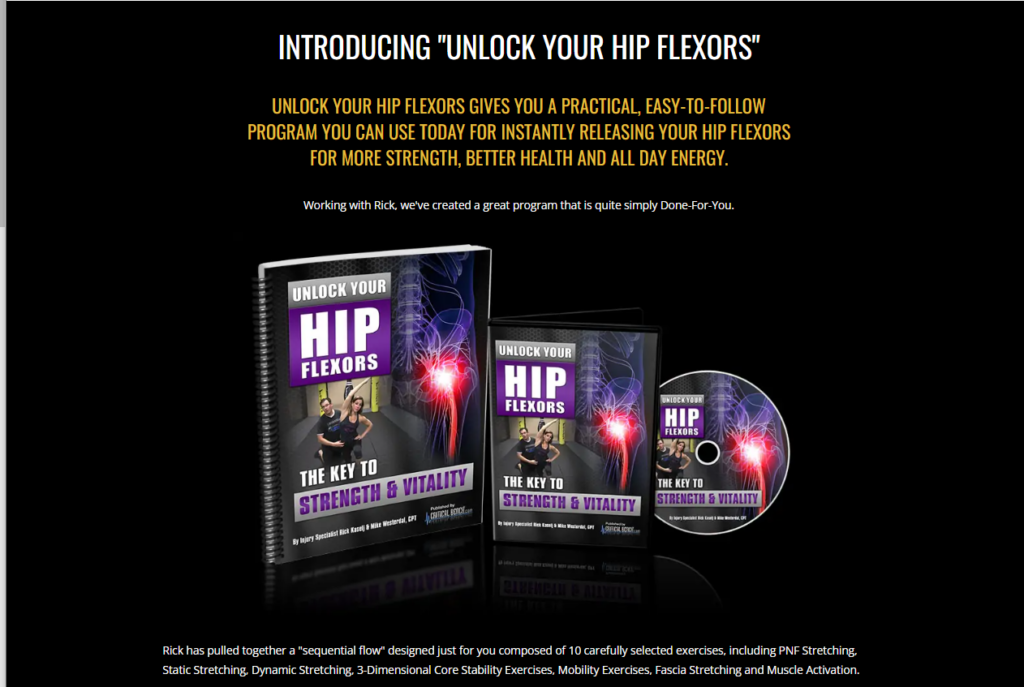
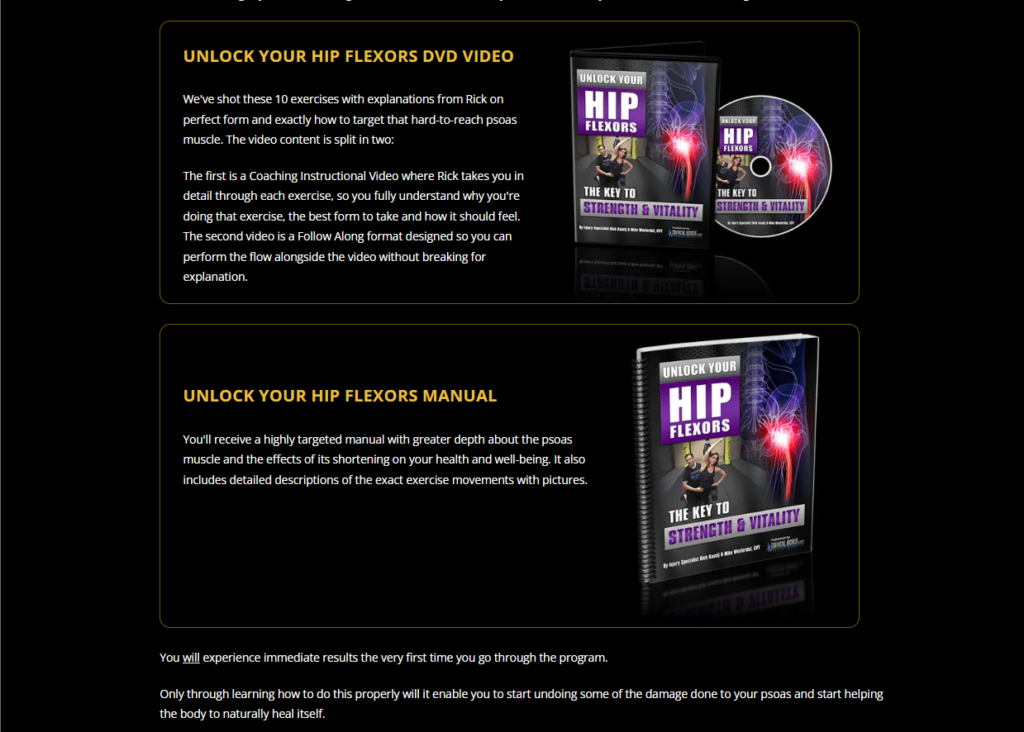

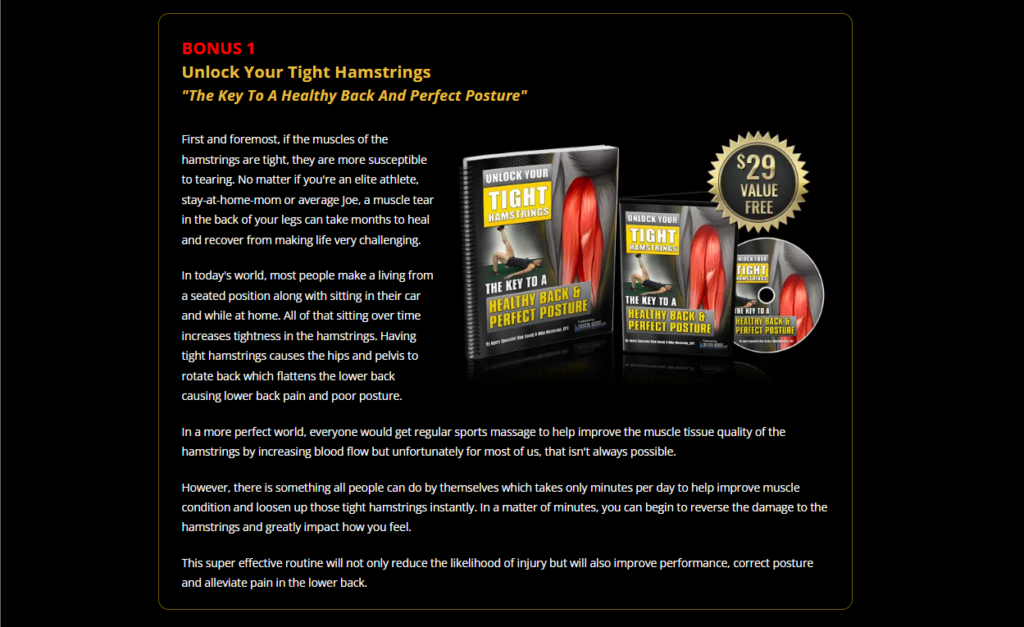




Dr. Sarah Miller is widely recognized as an influential leader in the healthcare field, with a career marked by excellence, innovation, and dedication to improving human well-being. Combining exceptional academic knowledge, clinical experience, and a deep commitment to research, she has become a reference in her specialty.








